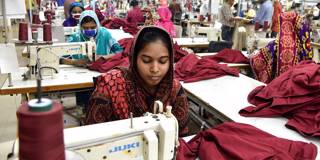After emerging poor and devastated from its independence struggle 50 years ago, Bangladesh has managed to become a global paragon of economic development. While the country's success is the result of many factors, two distinctive features of its political economy stand out.
NEW DELHI – Ravaged periodically by natural calamities, long dependent on foreign aid and remittances, and a perennial source of refugees and emigrants, Bangladesh was once “a basket case of misery,” as Zia Haider Rahman put it in his great debut novel, In the Light of What We Know. But on the 50th anniversary of its independence, Bangladesh is fast becoming a development paragon – a Miracle on the Meghna.

NEW DELHI – Ravaged periodically by natural calamities, long dependent on foreign aid and remittances, and a perennial source of refugees and emigrants, Bangladesh was once “a basket case of misery,” as Zia Haider Rahman put it in his great debut novel, In the Light of What We Know. But on the 50th anniversary of its independence, Bangladesh is fast becoming a development paragon – a Miracle on the Meghna.